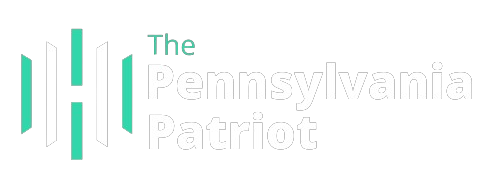A corridor in the Pennsylvania Capitol building in Harrisburg, October 14, 2025. (Photo by Jessica Kourkounis for the Pennsylvania Capital-Star)
Pennsylvania Treasurer Stacy Garrity said Tuesday that her office has provided more than $21 million in loans to four dozen organizations to keep them operating during the budget impasse.
The office launched a $500 million budget bridge loan program in September to support county governments and local Head Start agencies that provide education, health and social services to families with children ages 3 to 5.
Earlier this month, it expanded the program to support organizations that contract with county governments to provide services to rape victims and preschool children, as well as domestic violence prevention support.
Get our top stories delivered straight to your inbox every morning. Sign up now for the Pennsylvania Capital-Star Morning Guide.
Garrity, who will also run in the Republican primary for governor next year, announced that her office has approved 24 recent organizations, bringing the total to 48.
“Pennsylvanians, especially our most vulnerable, should never pay the price for budget impasse,” Garrity said in a statement. “Treasury is committed to working diligently with applicants to ensure funds can be delivered as quickly as possible.”
Meanwhile, House and Senate leaders from both parties met with Gov. Josh Shapiro in his office on Monday and Tuesday as both chambers returned to session this week.
Top lawmakers, including Senate Majority Leader Joe Pittman (Indiana), Senate President Pro Tempore Kim Ward (Westmoreland), House Majority Leader Matt Bradford (Montgomery) and House Speaker Joanna McClinton (Philadelphia) did not comment on negotiations leaving the governor’s office Tuesday afternoon.
A Shapiro spokesman said he did not have any updates on the budget process.
Shapiro introduced $51.5 billion spending plan in February, which included increased state funding for education and transportation, but also proposed recent tax revenues on legalized adult-use recreational marijuana and arcade games.
In July House adopted a simplified version Shapiro’s plan with no recent revenues and a reduction in overall spending of about $900 million. The Senate responded in August by passing a budget bill maintaining spending at the 2024-2025 level.
On October 8, the 100th day after the June 30 budget deadline, the House passed a second Democratic-led proposal that further reduced spending to $50.25 billion, while House and Senate leaders exchanged views at news conferences on Capitol Hill.
Last week, the Senate passed a second budget proposal that included a slight enhance in spending over the previous fiscal year. But the $47.9 billion figure covered most of Shapiro’s recent spending, and Democrats warned of the consequences of not fully funding schools and social safety net programs.
As the budget deadline passed this summer without an agreement, county and school officials across the commonwealth warned that the funds available to them would begin to run out in September. As a result, counties and school districts have been forced to spend reserves, borrow to forecast revenues or cut services. Those who take out the loan will be liable for interest that cannot be recovered.
In the case of district governments, the cuts affected social safety net services provided by private agencies under contract.
State Treasury loans must be repaid with interest at the rate of 4.5% within 10 days of receiving state funding, after budget approval. The Senate passed legislation this month authorizing Garrity’s cabinet give up interest and awaits consideration in the House.

